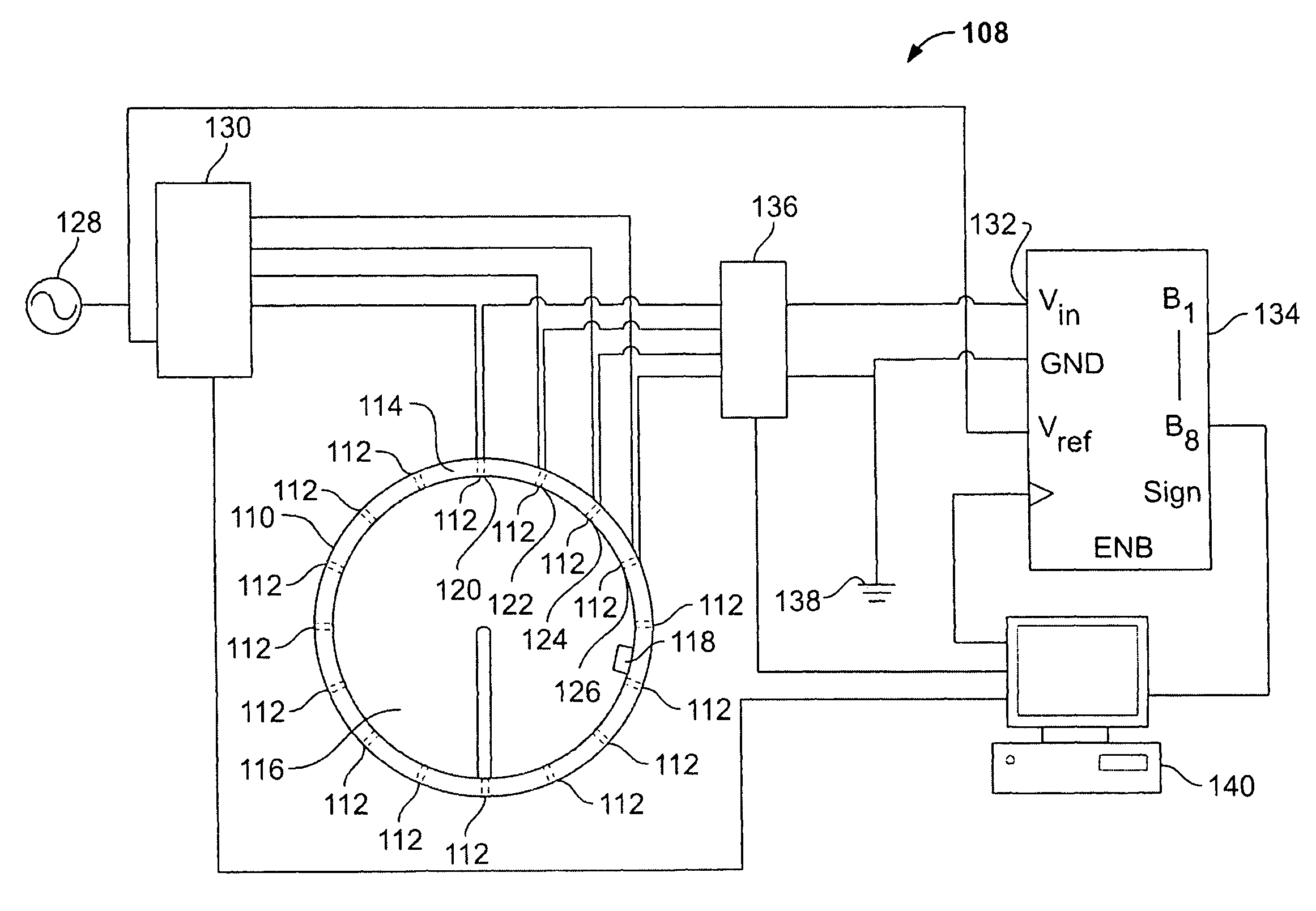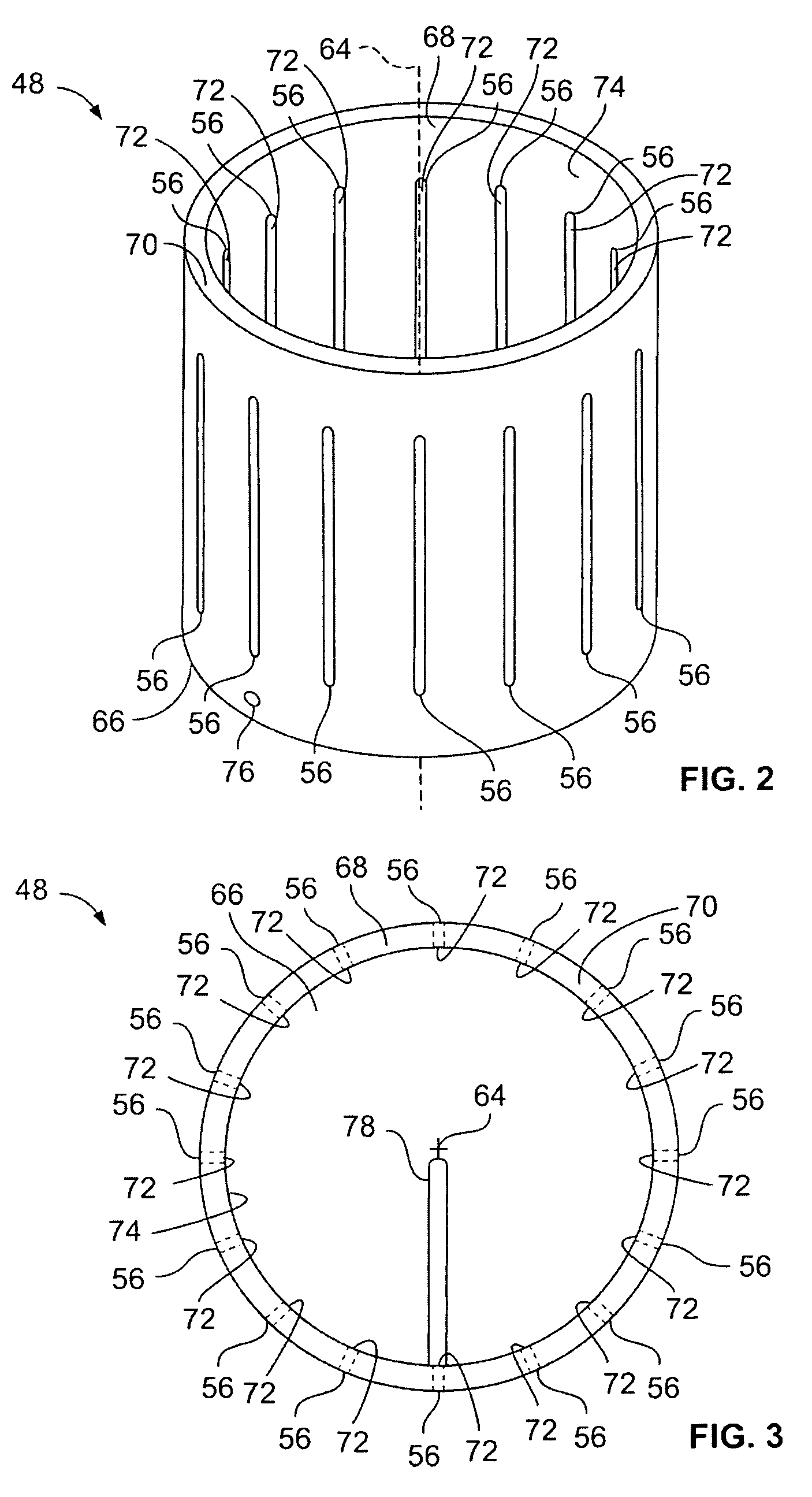Three-dimensional impedance imaging device
a three-dimensional impedance imaging and imaging device technology, applied in the field of biological imaging devices, can solve the problems of insufficient x-ray mammography for the early detection of breast cancer, inconvenient use, and inability to produce consistent quality,
- Summary
- Abstract
- Description
- Claims
- Application Information
AI Technical Summary
Benefits of technology
Problems solved by technology
Method used
Image
Examples
Embodiment Construction
[0032]The technology disclosed herein uses an electrically-conductive mediating fluid to provide an electrical contact between the electrodes of an EIT device and the skin of a body part to be examined. In the EIT method discussed herein, the height of the fluid is raised or lowered between impedance measurements, enabling tomographic images of the tissue under examination to be resolved mathematically for subsequent viewing.
[0033]FIG. 1 illustrates a conceptual example of an apparatus 10 for implementing an EIT method according to the present invention. For the purpose of illustration, the apparatus of FIG. 1 is presented with elements related to three electrodes (not shown). In practice, more than three electrodes should be used, as discussed elsewhere herein. The nature of such electrodes is discussed elsewhere herein.
[0034]Referring to FIG. 1, the electrodes are provided as part of testing tank 12 along the inner surface 14 of the tank wall 16. The tank 12 contains an electrical...
PUM
 Login to View More
Login to View More Abstract
Description
Claims
Application Information
 Login to View More
Login to View More - R&D
- Intellectual Property
- Life Sciences
- Materials
- Tech Scout
- Unparalleled Data Quality
- Higher Quality Content
- 60% Fewer Hallucinations
Browse by: Latest US Patents, China's latest patents, Technical Efficacy Thesaurus, Application Domain, Technology Topic, Popular Technical Reports.
© 2025 PatSnap. All rights reserved.Legal|Privacy policy|Modern Slavery Act Transparency Statement|Sitemap|About US| Contact US: help@patsnap.com



